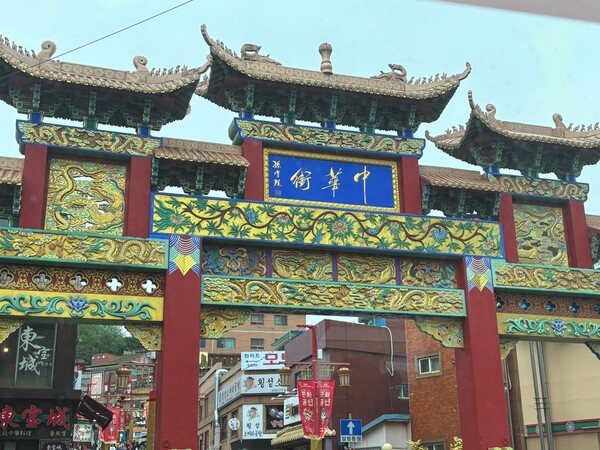
Walking through alleys adorned with red lanterns and intricate patterns evokes the feeling of being in another country. Just an hour from Seoul, Incheon Chinatown is not merely a tourist attraction. It is a place where cultural heritage, distinctive cuisine, and unique landmarks come together, offering visitors an impression of “little China” within Korea. Surrounded by tall, modern buildings, Chinatown preserves the charm and heritage of historic China. It will continue to stand as one of Incheon’s most iconic tourist destinations.
The history of Incheon Chinatown can be traced to the opening of Incheon Port in 1883. A year later, the area was designated as a Chinese concession, and Chinese merchants and immigrants began to build a community. In conclusion, Chinese immigrants engaged in trade, restaurant, and transport businesses, gradually forming a vibrant community. Even today, remnants of Chinese-style architecture and customs remain, giving the district enduring historical value. With such a long-standing history, the area has grown into a major attraction. According to a 2024 survey, it was ranked as the most popular tourist destination in Incheon, with 59.7% of foreign tourists including it in their itinerary and one in three domestic tourists visiting the area.
Beyond its historical legacy, Incheon Chinatown is famed for its culinary heritage. Incheon Chinatown is recognized as the birthplace of jjajangmyeon, the noodle dish first served at the Chinese restaurant Gonghwachun. From there, it evolved into the Korean-style Chinese cuisine we know today. The jjajangmyeon Museum, located in the renovated Gonghwachun building, allows visitors to explore the dish’s origins and evolution. Beyond jjajangmyeon, street foods, hollow bread, baked dumplings, and mooncakes, offer travelers a flavorful introduction to Chinese culture in Korea. Hollow bread is often filled with sweet or savory fillings. It is especially popular during the winter season. Baked dumplings are made from thin dough wrappers filled with a mixture of meat, vegetables, and seasonings. Mooncakes are sweet traditional pastries and are typically filled with ingredients such as sugar, nuts, or red bean paste. Together, these dishes allow visitors to experience the diversity of Chinese cuisine in Incheon Chinatown.
The district also boasts several cultural attractions. Among them, Jayu (freedom) Park provides sweeping views of Incheon Port and Chinatown. Established in the late nineteenth century, it was the first modern park in Korea and still retains the legacy of the port-opening era.
Located next to Chinatown, Songwol-dong Mural Village is decorated with colorful murals and sculptures, making it especially popular among families. The area also features many well-known photo spots, allowing visitors to take pictures and create lasting memories.
Another notable site in Incheon Chinatown is the Samgukji Mural Street, featuring vivid depictions from Samgukji (Romance of the Three Kingdoms), presenting visitors with striking vivid scenes of Chinese history and culture. Samgukji is a classical Chinese historical text that records the history, politics, and military affairs of the Three Kingdoms period. The text offers insights into Chinese culture, governance, and society during a time of political fragmentation and intense power struggles. Together, these sites highlight the cultural exchanges between Korea and China and underscore the symbolic importance of the area.
Incheon Chinatown has also served as a filming location for numerous movies and dramas due to its exotic atmosphere. Many popular dramas and movies have been filmed here. For example, in one film, a Chinese-Korean character even brings friends to Chinatown to taste mooncakes, a traditional Chinese snack. In addition, the movie The Witch was filmed in the alleys and stairways of Incheon Chinatown, where tense scenes of the protagonist running or being chased unfold.
Incheon Chinatown is ultimately a place where history, culture, cuisine, and sightseeing converge. Furthermore, various traditional events are held annually, adding to the vibrant atmosphere of Chinatown. By experiencing the unique culture shaped by centuries of interaction between Korea and China, travelers leave with a richer, more informed perspective. Even a short visit to Chinatown leaves a lasting impression. It remains a destination visitors will want to return to again and again. Furthermore, it is highly accessible to both domestic and foreign visitors, located just a four minute walk from Incheon Station and offering convenient parking facilities. Therefore, for those who seek a break from everyday routine and want to explore something different, a trip to Incheon Chinatown is a great choice that does not require much time or expense.

